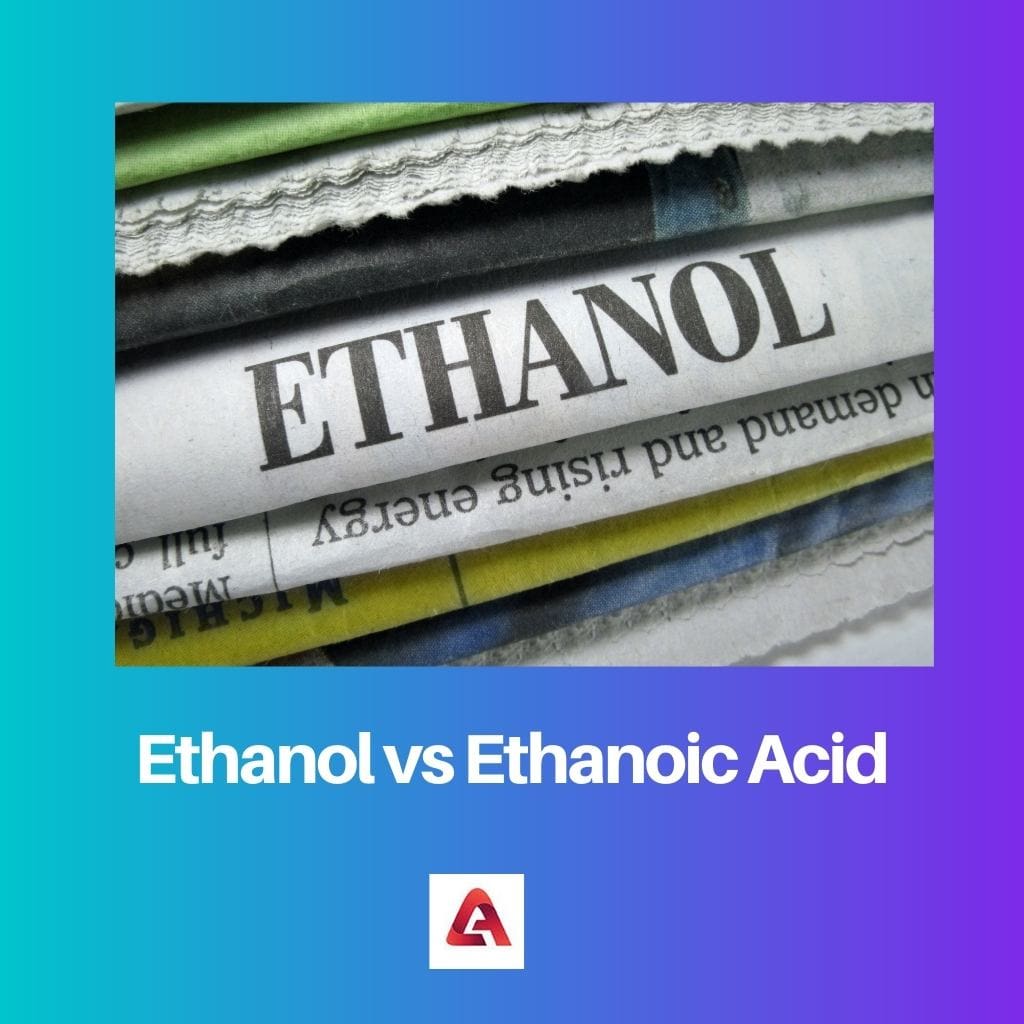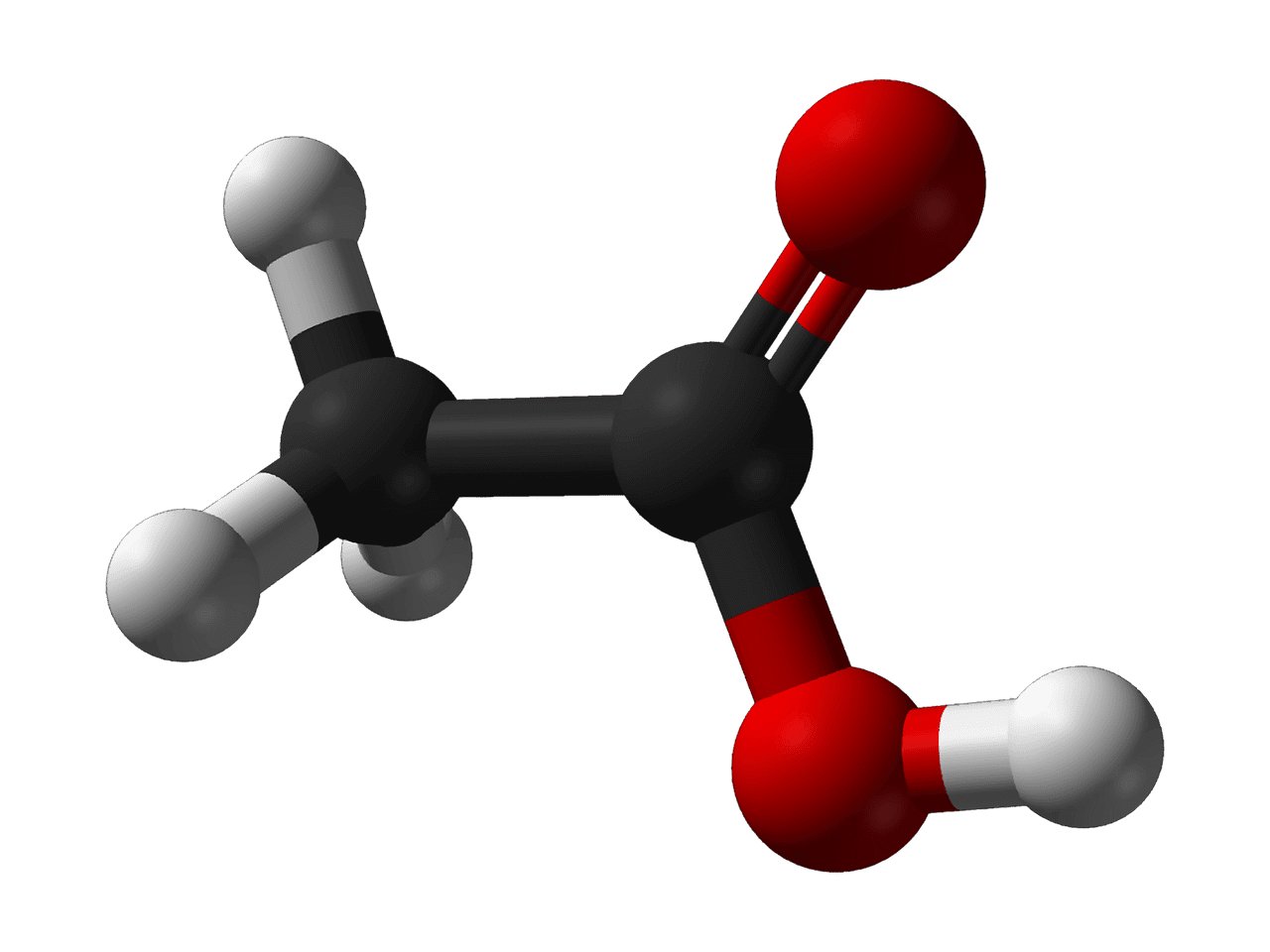People confuse Ethanol and Ethanoic acid because of the similarity in their names. Except for this, the only common link between both is their physical state. Both are in liquid form and are colourless. Other than these two factors, both acids have many differences.
Ethanol is simply alcohol that is a flammable and volatile liquid and also an alternative fuel source. It is a psychoactive substance as a recreational drug and an active ingredient in alcoholic drinks.
Contrarily, Ethanoic acid is the succeeding carboxylic acid to the formic acid. Globally, its demand is up to 6.5 million metric tons per year.
Their density, smell, flavour, boiling, and melting points everything differs from one another. The molecular formula of ethanol is C2H5OH, and ethanoic acid is CH3COOH.
Key Takeaways
- Ethanol is an alcohol with the chemical formula C2H5OH, while ethanoic acid is a carboxylic acid with CH3COOH.
- Ethanol is a colorless liquid with a slight odor commonly used as a fuel and solvent. At the same time, ethanoic acid is a colorless liquid with a strong odor commonly used in vinegar production.
- Ethanol has a lower boiling point than ethanoic acid, making it easier to evaporate and less acidic than ethanoic acid.
Ethanol vs Ethanoic Acid
Ethanol, also known as ethyl alcohol, is a colourless, flammable liquid that is commonly used as a solvent, fuel, and in alcoholic beverages. Its chemical formula is C2H5OH. Ethanoic acid, also known as acetic acid, is a clear, colourless liquid that has a sharp, pungent odor. Its chemical formula is CH3COOH.

Comparison Table
| Parameters of Comparison | Ethanol | Ethanoic Acid |
|---|---|---|
| IUPAC Name | The International Union of Pure and Applied Chemistry (IUPAC) name of Ethanol is the same as it is called. | International Union of Pure and Applied Chemistry (IUPAC) name of an Ethanoic acid is an Acetic acid. |
| Molecular Formulae | Its molecular formula is C2H5OH. | Its molecular formula is CH3COOH. |
| Density | 0.789 g/cm3 | 1.05 g/cm3 |
| Odour | It has a pleasant perfume-like odour. | It has a pungent or vinegar-smelling odour. |
| Taste | It is Burning and Bitter. | It is Sour. |
| Boiling Points | It has a boiling point of 78.37 ℃ or 173.1℉. | It has a boiling point of 117.9 ℃ or 244.2 ℉. |
| Melting Points | It has a melting point of -114.1 ℃ or -173.5℉. | It has a melting point of 16.6 ℃ or 61.9 ℉. |
| Functional Group | It has alcohol (-OH) as a functional group. | It has carboxylic acid (-OOH) as a functional group. |
| Existence of other Groups | Ethyl and Hydroxyl groups exist in Ethanol. | Methyl and Carboxyl groups exist in Ethanol. |
| The Litmus Paper Test | It exhibits a 7.33 pH scale at a concentration. | It exhibits a 2 to 4 pH scale at a concentration. |
| NaHCO3 Test | It does not react with sodium bicarbonate. | It reacts with sodium bicarbonate and releases CO2 gas. |
| Easter Test | It forms Ester only after reacting with the presence of ethanoic acid. | It forms Ester after reacting with the presence of Sulphuric acid. |
| Molar Mass | 46.07 g/mol | 60.052 g/mol |
| Used For | It can be used as a sterilizing agent or for making alcoholic beverages. | It can be used as a toilet cleaner or for making vinegar. |
What is Ethanol?
The International Union of Pure and Applied Chemistry (IUPAC) name of Ethanol is the same as it is called.
Its molecular formula is ‘C2H5OH,’ and Its density is 0.789 g/cm3. It has a bitter, burning taste and a pleasant perfume-like odour. It can be used as a sterilizing agent or for making alcoholic beverages.
The molar mass of this acid is 46.07 g/mol. The melting point of Ethanol is -114.1 ℃ or -173.5℉. And its boiling point is 78.37 ℃ or 173.1℉. During fermentation, ethanol forms using yeasts such as Saccharomyces cerevisiae or Schizo-saccharomyces.
The Litmus Paper Test exhibits a 7.33 pH (potential of hydrogen) scale. It does not react with sodium bicarbonate. It forms Ester only after a reaction with the presence of ethanoic acid. It has alcohol (-OH) as a functional group. Other than this, there are Ethyl and Hydroxyl groups that exist.

What is Ethanoic Acid?
International Union of Pure and Applied Chemistry (IUPAC) name of an Ethanoic acid is an Acetic acid. It has a sour taste and pungent or vinegar-smelling odour. Its molecular formula is ‘CH3COOH,’ and Its density is 1.05 g/cm3. It can be used as a toilet cleaner or for making vinegar.
It exhibits a 2-4 pH (potential of hydrogen) scale in the Litmus Paper Test. It reacts with sodium bicarbonate and releases CO2 gas. It also forms Ester after reaction with the presence of Sulphuric acid.
It has carboxylic acid (-OOH) as a functional group. Other than this, there are Methyl and Carboxyl groups that exist.
The molar mass of this acid is 60.052 g/mol. While fermenting, Acetobacter bacteria form Ethanoic acid. When Ethanoic acid passes through the lime liquid, it becomes opaque and becomes CO2 gas. Its boiling point is 17.9 ℃ or 244.2 ℉. And the melting point is 16.6 ℃ or 61.9 ℉.

Main Differences Between Ethanol and Ethanoic Acid
- The Molecular Formula of Ethanol is C2H5OH, whereas Ethanoic acid is CH3COOH.
- 0.789 g/cm3 is the density of ethanol, while 1.05 g/cm3 is ethanoic acid.
- The first has a pleasant perfume-like odour. On the contrary, the second has a pungent or vinegar-smelling odour.
- The ethyl tastes little burning and bitter. The acetic acid tastes sour.
- Ethanol’s boiling point is 78.37 ℃ or 173.1℉. Conversely, Ethanoic acid’s 117.9 ℃ or 244.2 ℉.
- The melting point of the first is -114.1 ℃ or -173.5℉. On the other hand, the second one’s 16.6 ℃ or 61.9 ℉.
- The previous has alcohol (-OH) as a functional group. Contrarily, the succeeding has a carboxylic acid (-OOH).
- The ethanol exhibits a 7.33 pH scale in the litmus paper test, whereas ethanoic acid exhibits a 2 to 4 pH scale.
- The former does not react with sodium bicarbonate. Conversely, the latter does react and release CO2 gas.
- The molar mass of ethanol is 46.07 g/mol, while the molar mass of ethanoic acid is 60.052 g/mol.
- https://pubs.acs.org/doi/abs/10.1021/je300810p
- https://www.sciencedirect.com/science/article/pii/S0378775301010679
- https://www.sciencedirect.com/science/article/pii/S0022328X04004668
This article has been written by: Supriya Kandekar
This post is a breath of fresh air, offering insightful knowledge about Ethanol and Ethanoic acid.
Absolutely, it’s informative and enlightening.
This information is crucial for the chemistry enthusiasts who wish to further their knowledge.
As someone who loves chemistry, I appreciate the depth of this explanation.
As someone with a keen interest in chemistry, I find this article to be an exceptional source of information.
Indeed, it’s a well-articulated and thorough explanation of the topic.
I’m glad this post exists, many people don’t know about the contrast between Ethanol and Ethanoic acid.
Absolutely, the scientific details help readers understand.
This article is an excellent resource for students and professionals in the field of chemistry.
The in-depth analysis sets this article apart from others.
Certainly, it offers valuable knowledge that contributes to a deeper understanding of the topic.
The post effectively differentiates between Ethanol and Ethanoic acid using scientific evidence.
Agreed, it’s rare to come across such well-researched content.
The informative content is a testament to the author’s expertise in the subject matter.
I appreciate the detailed and objective nature of this post.
The scientifically accurate comparison provides valuable insight.
I find the detailed comparison table and key takeaways to be very useful and insightful.
The clarity of information presented here is commendable.
I agree, this post gives a holistic view of the differences between Ethanol and Ethanoic acid.
This is a very informative article that clears up any doubts on the difference between Ethanol and Ethanoic acid.
Finally, I understand the distinction between the two thanks to this article.
I agree, this is explained clearly in a scientific way.
The detailed explanation provided here is highly beneficial and enriching.
Absolutely, it enhances the reader’s understanding of the subject matter.